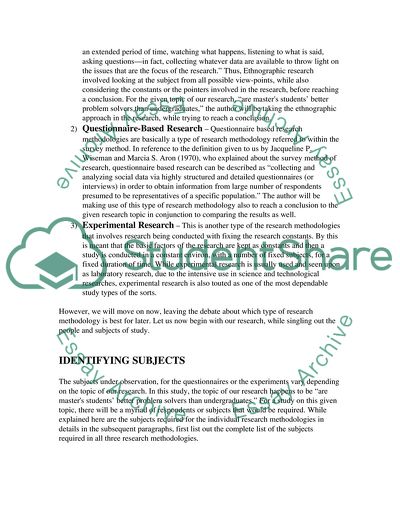Cite this document
(Students and Problem Solving Coursework Example | Topics and Well Written Essays - 4250 words, n.d.)
Students and Problem Solving Coursework Example | Topics and Well Written Essays - 4250 words. Retrieved from https://studentshare.org/education/1718472-research-problem-are-masters-students-are-better-problem-solvers-than-undergraduates
Students and Problem Solving Coursework Example | Topics and Well Written Essays - 4250 words. Retrieved from https://studentshare.org/education/1718472-research-problem-are-masters-students-are-better-problem-solvers-than-undergraduates
(Students and Problem Solving Coursework Example | Topics and Well Written Essays - 4250 Words)
Students and Problem Solving Coursework Example | Topics and Well Written Essays - 4250 Words. https://studentshare.org/education/1718472-research-problem-are-masters-students-are-better-problem-solvers-than-undergraduates.
Students and Problem Solving Coursework Example | Topics and Well Written Essays - 4250 Words. https://studentshare.org/education/1718472-research-problem-are-masters-students-are-better-problem-solvers-than-undergraduates.
“Students and Problem Solving Coursework Example | Topics and Well Written Essays - 4250 Words”, n.d. https://studentshare.org/education/1718472-research-problem-are-masters-students-are-better-problem-solvers-than-undergraduates.


